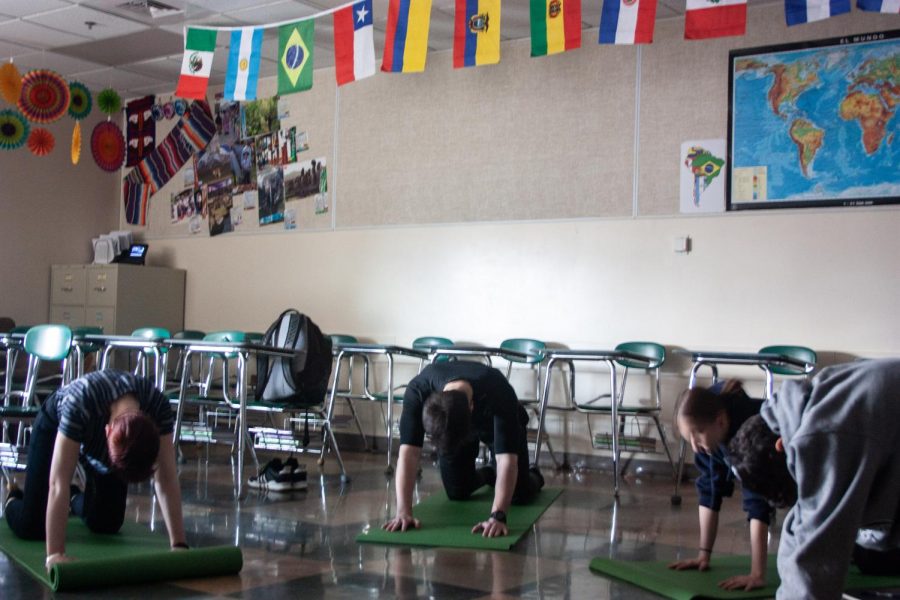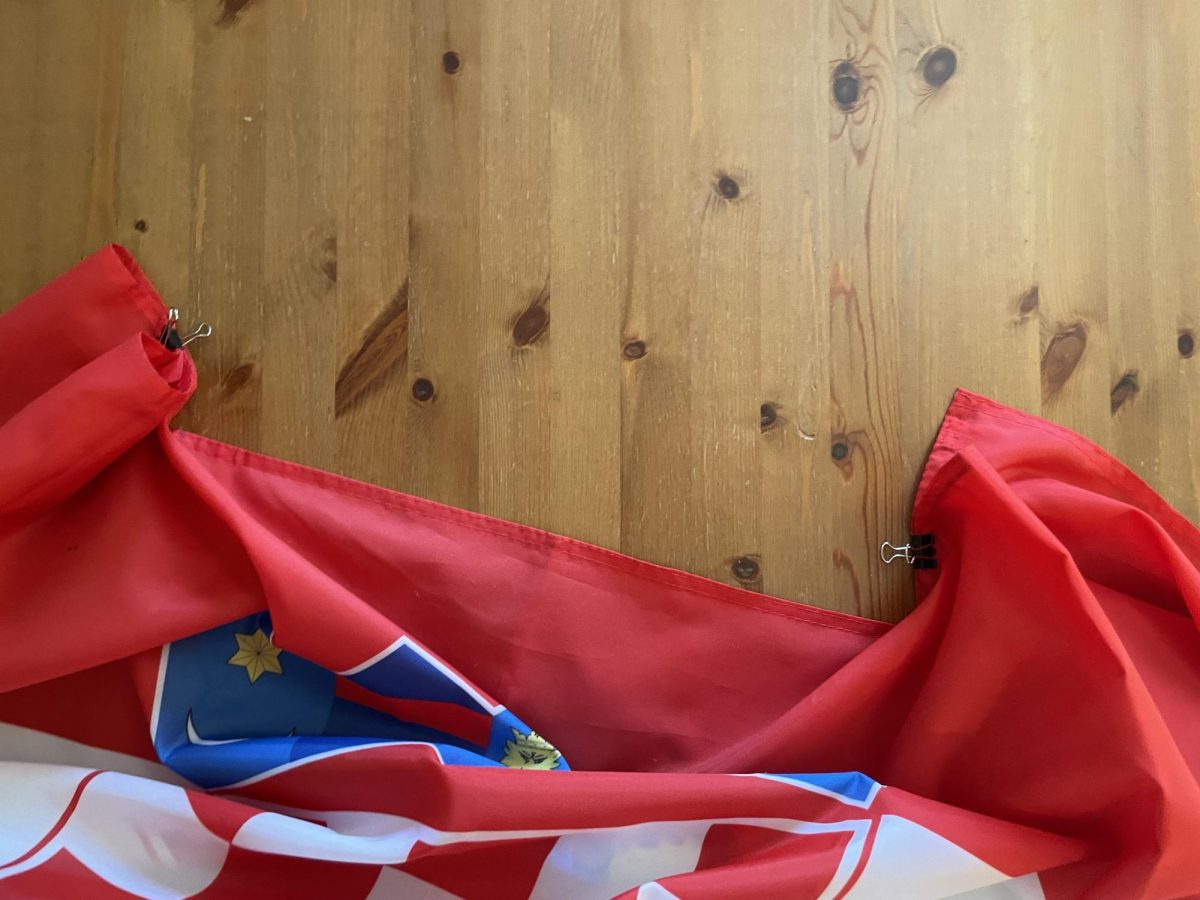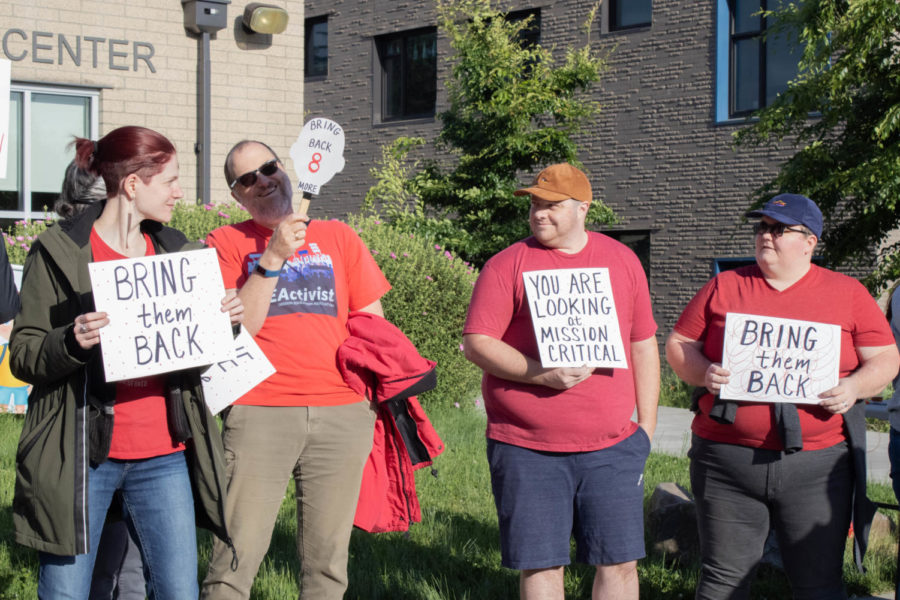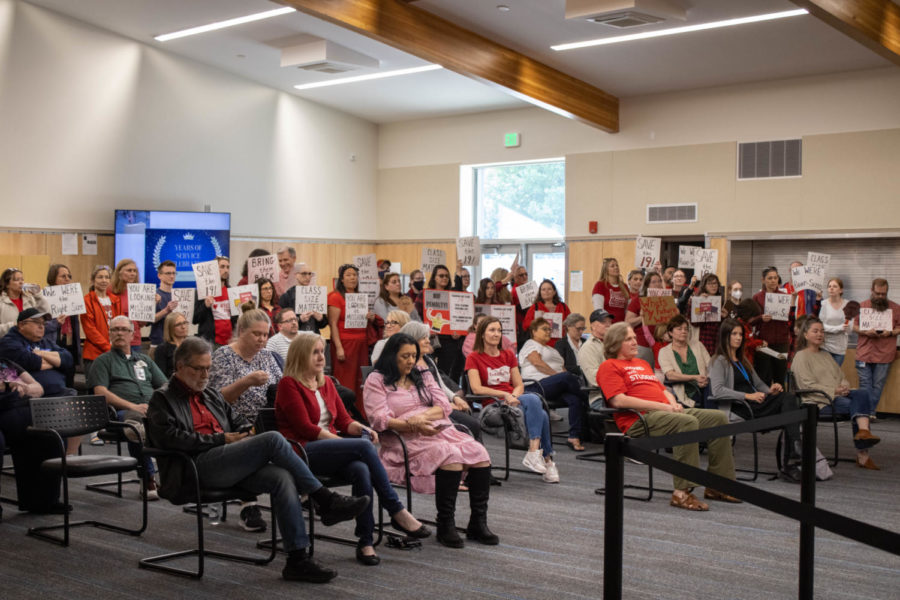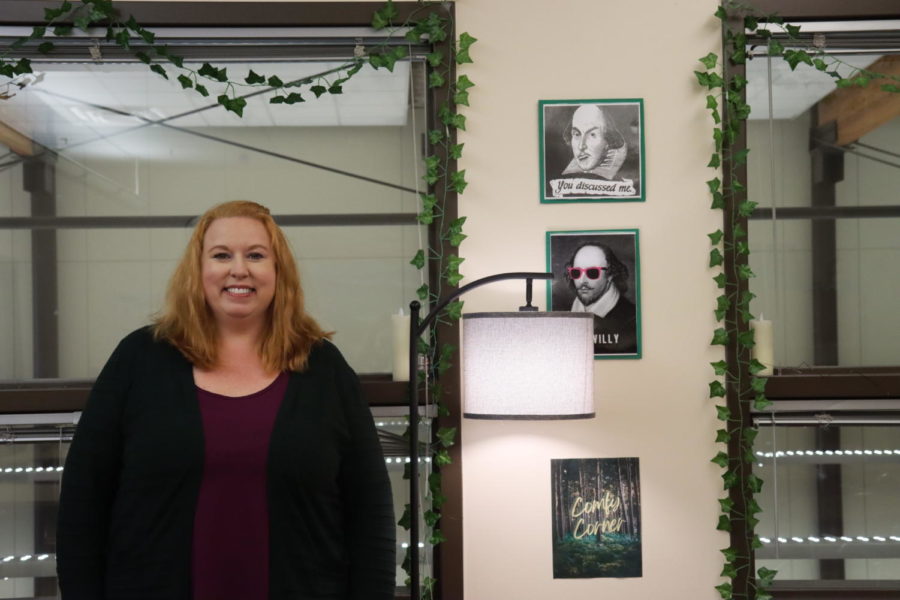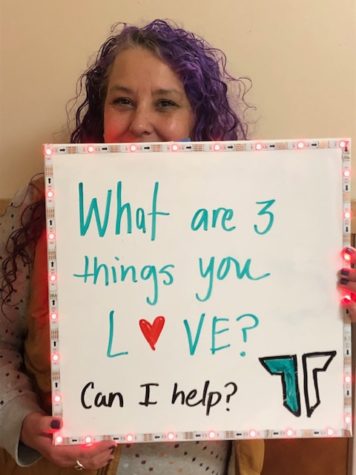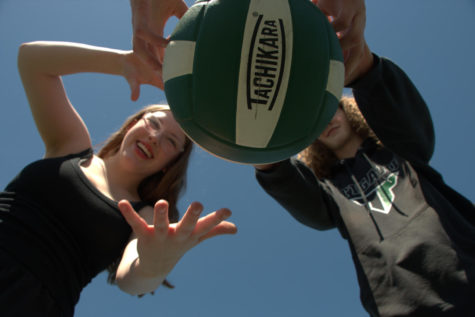Mindfulness class
Students can participate in a mindfulness class. They do yoga and meditation.
March 21, 2019
Tigard High hosted a mindfulness class earlier this year to provide tools for students to cope with trauma as well as anxiety and self-criticism. The class (split into eight after-school sessions every Wednesday from Jan. 23) was led by two certified mindfulness teachers: Judy Clarke, a former mental health therapist, and Karen Trumbo, a yoga instructor. Clarke and Trumbo introduced a variety of techniques to students to manage stress, from yoga to guided meditations.
The mindfulness class was brought to Tigard by Trauma Specialist Alfonso Ramirez in order to provide an opportunity for students to deal with emotional trauma in a healthier way. Ramirez, who had taken a two-day mindfulness class taught by Clarke over the summer, found mindfulness programs to be particularly beneficial.
“For me personally, it helped bring some tools to[…] be more effective in my life with the things I wanted to do professionally, but also at home,” Ramirez said. “It helped me to manage my stress and feel a little bit more hopeful about the things that I wanted to accomplish.”
In an effort to spread the word and bring in as many students as possible, Ramirez announced the mindfulness class to students in their health classes and gave a presentation to inform the students of the possible benefits.
The class consisted of different activities in order to increase mindfulness and self-compassion, which the teachers defined mindfulness as being aware of what’s going on within you and the self-compassion as treating yourself like you would a good friend. The first part of the class would be doing yoga and then the next part would be focused around journaling activities, or doing some mindfulness meditation.
Students were given a yoga mat as part of the class, along with a journal which they could write down activities in. There were also various “homework” assignments that were a part of the class, which consisted of doing things like taking three mindful breaths three times over the day, and trying to increase one activity by 10 percent of which they enjoyed.
It was a long process in order to get this class running. Clarke and Trumbo had been friends for a long time, but they had a hard time getting this teaching opportunity together. Clarke has worked in counseling and conflict mediation, while Trumbo has instructed yoga for 12 years. As for teacher certification, they became teacher trained for the class a few years prior.
Both of them have extensive experience in what they do. Trumbo worked with an organization called Living Yoga, worked with girl teens at Depaul Rehab Center, and worked with teens at the MaClaren Youth Correctional Facility.
Trumbo found that yoga was a crucial tool for many different people. “I saw how it changed the teens that I worked with in rehab, and in the correctional institution,” Trumbo said. He has taught all ages, from three-year-olds to 80-year-olds, and has seen yoga help a wide variety of people.
“I’ve taught little kids that were already being labeled ADD or ADHD, and I swear I would work with some of those kids and they learned how to self-calm just by breathing,” Trumbo said. “To me, that’s one of the most rewarding things you can actually ever do.”
Clarke worked in mental health, and has a masters in education, along with a masters in counseling/psychology. She’s always had an interest in mindfulness before it became more widely known and recognized, going on mindful walks, and utilizing mindfulness in her own life, having a dedicated meditation practice for around 40 years.
She’s realized how important it is to have everyone develop more self-compassion from her work. “I knew that loving yourself and having compassion for yourself is where all relationships start, and was the most important thing to have,” Clarke said. “And I’ve know that for myself and the folks that I’ve worked with for years.”
They both enjoy working with teens and were pleasantly surprised at the openness of everyone at this school.
The main takeaway from the class was to get students to treat themselves better, much like they would a good friend, instead of beating themselves up. Self-acceptance is crucial for people this age. Teenagers may especially struggle with this issue, and mental health issues are common for this age group. Clarke hopes that students could learn to “stop and check in and learn to be kinder to themselves when they do that”.
Students found the class to be a spot where they could feel comfortable sharing stories about their life, along with learning tools that could help them with what they were dealing with. Sophomore Faith Heupel took the class and received some benefit from it, especially from the breathing and grounding exercises that were taught.
“I decided to join this class because as a sophomore and as a teenager, I have a lot of anxiety, and I get stressed out a lot, and I thought this class would help out with that quite a bit,” Heupel said.
She also thinks that the techniques could have a positive effect on more students if it was an actual class at the school.
“I think this class is important because it helps people with anxiety, stress, and depression, and stuff like that,” Heupel said. “I think that possibly if the school enforced it as a required class, it would have quite a positive impact on everyone.”
Trumbo thinks that their class has the potential to have a positive effect across the community. “Once you are able to [accept yourself] then it’s easier to accept other people just the way they are,” Trumbo said. “They might not believe the same things as you, they may not want the same things as you, but if you can accept yourself, that kind of ripples out I think into the community.”
In the future, there might be more opportunities for the class to be included within the school as an actual class for credit, or at least that’s what the teachers are hopeful for. The teachers both believe that these are valuable skills that all teenagers could use in their life.



